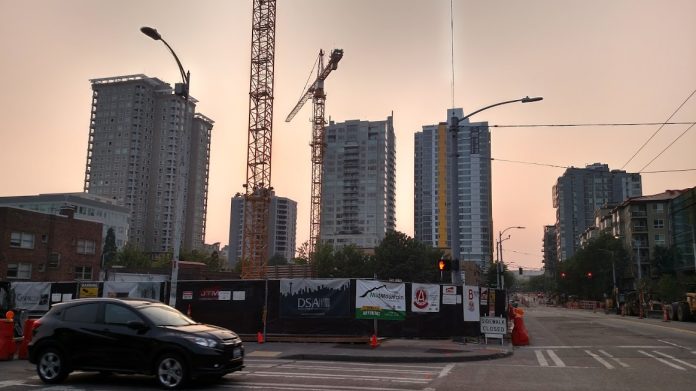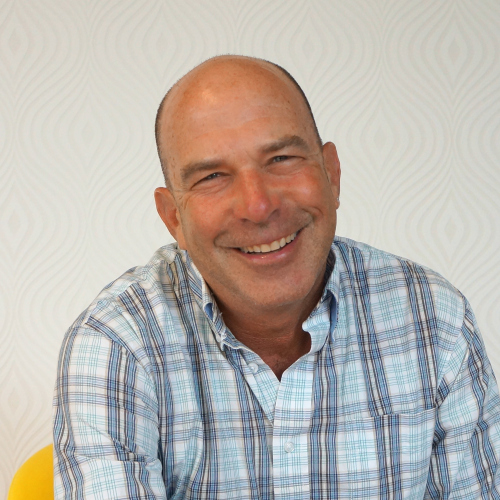Introduction
In an age of rising political polarization, it can be tough to find common ground with those whom we disagree. To break through the social and political divide, I have found it useful to ask a simple question: what do my opponents get right? An uncomfortable question, to be sure. A vulnerable question, even. Answering honestly can reveal assumptions and flaws in your deeply held beliefs, exposing you to risk of the sometimes painful process of changing your mind. The quest to understand your opponent is nevertheless essential if your goal is to find truth, or at least to find a workable solution.
To that end, I sat down with two folks from Seattle Fair Growth, a group of neighborhood advocates who believe that the HALA grand bargain is “deteriorating” our city “from unrestrained development.” Nonetheless, they are adamant that they are not NIMBYs or slow-growth advocates. Instead, they recognize growth is coming and want to find ways to accommodate that growth. They believe that growth should pay for growth, that infrastructure should be built concurrently with housing, and that neighborhood groups should have a larger role in shaping growth.
In our hour-long interview, we covered the goals and mission of Seattle Fair Growth, classroom shortages, family-sized housing, missing middle housing, and what they think urbanists are getting right and wrong in the housing debate.
A transcript of our interview is available below, lightly edited for clarity.
Understanding Seattle Fair Growth
Ben Crowther: Normally the interview starts out by asking if you consider yourselves to be urbanists. I take it that you may not. So what terms do you use to describe yourselves?

Sarajane Siegfriedt (SS): I took urban studies in college and I’ve always lived in cities and I’ve always thought of myself as an urbanist until somebody else decided that I’m not. So it was a shock to me to find out I’m not an urbanist [laughter]. You suggested neighborhood advocate. We took a long time to think about a name that we made for our organization and our website, which is Seattle Fair Growth, so we’re obviously not against growth.
Jon Lisbin (JL): I’ve been running a business so I haven’t been involved in politics until maybe the last three years or so. It’s a long story of how I got involved in it, but I don’t look at it as urbanists versus non urbanists. I feel like I live in a neighborhood and I want a livable neighborhood and care about issues that concern us. I feel there are values that I agree with about urbanism. It’s just the way we get there that’s different.
BC: I want to ask about Seattle Fair Growth as an organization. Can you tell me about your goals and your values?
JL: You can get it from our website, but some of our main values are: we believe growth should pay for growth, and that with all of this development that’s occurring, it should pay for infrastructure and that infrastructure should also be concurrent with the growth–that’s one of our strongest values. We feel that’s not happening. We also believe in one-for-one replacement of affordable housing. When goals are set for affordable housing, it has to be net new goals, not just gross new because there’s a lot of affordable housing that’s being demolished in the name of affordable housing. We oppose one-size-fits-all policies and zoning. We feel that, for instance, with the MHA [Mandatory Housing Affordability], there are some urban villages that are single-family zones. Most urban villages are not, but there are some that are and they have beautiful homes–craftsmen–like Wallingford, for example. I don’t live in Wallingford, but I think it would be a shame to destroy those beautiful homes. We feel that it should be on a local basis. It should be locally thought out.
SS: By contrast, I live in Lake City. I was on the Urban Design Framework. In Lake City, there are only five single-family parcels now [editor’s note: this depends on how broadly you define Lake City’s boundaries. The Seattle City Clerk defines Lake City as a combination of five neighborhoods. A 2014 zoning map shows many single-family zoned parcels in these neighborhoods]. Lake City has 14-acres that are owned by the Bill Pierre family. We all have spent years visioning what growth would look like there and inviting growth to come–we want it there because it’s car lots and who wants to look at car lots? While Lake City stands fervently in favor of upzoning and growth, it’s been marketed, so it’s simply the developers aren’t ready to go there yet. Versus Wallingford, where I keep asking why there isn’t a landmark historic district to save the craftsmen homes that they replicate in Issaquah when we have the real thing.
JL: There are a couple other things that are on our website. For instance, maintaining the tree canopy in Seattle. We’re very much environmentally oriented even though we understand that urbanists feel differently about how to protect the environment. However, we feel that a big part of that environment is in some of these urban villages, not necessarily downtown. Having permeable land. Not having lot-line-to-lot-line coverage. We’re very concerned about the lack of goals in the comprehensive plan right now which was taken out. Where previously the goal was at 40% urban canopy, now it’s about 28% [editor’s note: the 2007 Urban Forest Management Plan set a goal of 30% citywide coverage. Current coverage is estimated at 28% by a 2016 study].
SS: They took away the goal. There’s no goal. We just have 28%. The [American Forests Association], if I’m paraphrasing the name, said Seattle should not only have a goal of 40%, it should be higher. But we’re going in the wrong direction. Seattle is known as a green, leafy place. To lose all of that because we’re just not counting or paying attention would be a shame. Part of what’s causing it is that you have developers who are buying up parcels. We know for a fact in Ballard that they’re telling the single-family homeowners that they have to scrape the lot clean before they’ll buy it; they have to take all the trees down. They’re purposefully defeating the very weak tree ordinance that we do have.
BC: Can you talk about the broader progressive values that your positions and organization connect with?
JL: We’re strong advocates for education, for environmentalism, for efficiency in government. We are also concerned about corruption in government and we see that corruption in, for instance, the Grand Bargain. We feel that it was a top-down, developer-driven policy. 65% of the Mayor’s task force were development interests [editor’s note: a roster of committee members available here]. We feel it’s corrupt. We won’t really get into details but that’s how we fit with progressive values.
SS: We also fight for human rights and dignity and anti-racism. We really want our communities to be a home for people of all incomes and all races and cultures. We celebrate multiculturalism. Lake City is one of the most diverse neighborhoods in the city. Some of the city’s data that I’ve seen is old, going back to 2010. Between 2010 and 2015 Lake City went from 25% people of color to 50% people of color. Who knew?
BC: Can you talk about the values that you seek to move forward with your housing policies?
SS: People of all incomes should be able to live in all parts of the city. Housing policies should reflect the needs of people as opposed to the needs of developers. For the Grand Bargain, MHA in particular, the developers said they could go as low as 60% of area median income (AMI), that’s the most they’re willing to go. This is when it was called mandatory inclusionary zoning (MIZ)–that was the original name of the policy. So the City said “okay, fine.” 60% AMI at that time was rent of $1,000/month for a single person, [wages of] $19-$20/hour, $38,000-$39,000/year. The policy leaves out everybody below that, the way it was written.
A year later, the name “mandatory inclusionary zoning” disappeared without announcement and it was changed to “mandatory housing affordability.” I heard a developer at a meeting I went to at Redfin, he stood up in a very large room of downtown people and said they’re not going to include any affordable housing in our projects because it doesn’t make any sense. I believe that that’s the pushback the city got over the whole year. So a year later, they came back with a new policy that took away the inclusionary part and they said instead of maybe 50% they estimate being included, they now are estimating one-sixth of the units will be included in the building. I think both numbers were pulled out of the air or some other part of the anatomy. What the developers are really saying is, “Oh hell no. We’re going to pay the fee. Are you nuts?” Because it, in effect, puts a lien on the property. It means that, in five years when they want to sell it, some of those units are income-limited and that’s not helpful for the sale. That’s what’s been going on that the City doesn’t ever talk about that.
Meanwhile, whether it’s 50% or one-sixth or all of them that pay the fee in lieu of the inclusionary part, then those units get built somewhere else and contracted by the city. [editor’s note: for what it’s worth the ordinance includes guidance to locate affordable housing “near developments that generate cash contributions.”] So the City goes through a lengthy process of putting out an RFP [request for proposal], the non-profits have to locate and secure the land. It takes at least four years for these units to be available. You’re not only building them elsewhere, you’re delaying them. Then the City says they leverage the developers funds three-to-one. Which means we’re all paying for three-quarters of them, which they don’t say. They’re using the State Housing Trust Fund, Seattle Housing Levy funds, which they already counted towards the total of affordable housing. So in that sense they’re double counting these [units] and saying they’re going to produce x-many units with MHA funds but those are the same units that they’re producing with the Housing Levy funds. We’re saying this is not a good deal. The taxpayers are paying for this and the nonprofits are building them. All in all, I feel kind of ripped off by the whole policy and that it wasn’t very straight-forward, it hasn’t been presented as what’s going on. The community wasn’t involved, it was a top-down decision behind closed doors, the Grand Bargain. It’s frustrating to think about another four years of top-down decisions like that. [editor’s note: the City outlines the housing production estimates from in-lieu payments here. More information about the MHA program is available here].
DL: We’re advocates for impact fees. We believe that growth should pay for growth. We think it could be very useful for capital improvements for schools as there’s a great need for schools, new schools downtown. There’s what, 1,000 classrooms…
SS: We’re 600 classrooms short, according to Eden Mack. Eden Mack has been the point person for the PTAs school capacity studies. It’s one of the reasons she’s got so much support for the [Seattle] School Board. That counts not only growth. Seattle schools are growing at 1,000 students per year every year since 2010 [editor’s note: data from Seattle Public Schools show an average increase of 800 students annually from 2012-2016]. That’s two-and-a-half grade schools. You don’t see two-and-a-half grade schools going up. We have a capital levy structure where every three years we pass a school capital levy. The money from the last levy is all spent. All of the mothballed schools have been reclaimed. The levy that we passed two years ago now–that’s all dedicated to catching up with maintenance, the $2 billion maintenance backlog [editor’s note: in 2016, Seattle voters passed two school levies: one for operations, another for capital improvements. The capital levy expects to reduce the maintenance backlog from $508 million to $247 million]. We’re not building more schools. Except that we’re still growing, people are coming. We’ve grown to 54,000 kids.
When Seattle Schools changed its school assignment policy, it stopped bussing. Suddenly the parents on the north side felt more comfortable sending their kids to the local schools because they could walk or be dropped off. It’s much more involvement. All the north side schools are oversubscribed. The class sizes are huge. The Growth Management Act provided a funding mechanism to pay for school capacity so that growth pays for growth. School capacity is the number-one use of impact fees across the state. But the city hasn’t owned it. So why won’t the Mayor declare a school capacity crisis and address this issue? Instead, the Mayor passed a preschool program and leaned on the public schools for classroom space, which they don’t have at all. It was a real lack of communication and it was a real shame.
JL: One of our values is everyone should have a roof over their head. There’s a huge homeless crisis right now. A lot of that is related to the increased cost of housing. There’s a correlation between increases in housing costs and homelessness. A lot of that is related to the opioid crisis. I don’t personally think that there is a solution to homelessness but I think it can be addressed a lot more efficiently.
BC: You described a value of ensuring that everyone has a roof over their head. Many urbanists feel we have a housing shortage and prescribe increased density as a way to overcome that shortage. What does the solution look like for Seattle Fair Growth?
SS: How does increased density produce housing for people that are very low-income or sleeping in the street? All we’re doing is building luxury units. We just don’t understand the thinking. There’s no connection. I did see a statistic that counted the number of new hires–Amazon and others–of people coming in for tech jobs and then counted the number of luxury units being built. Housing in Seattle, on average, is two people per household. So there’s almost a one-for-one correlation. Essentially we’re building enough housing for the tech jobs that are coming. What we’re not doing is replacing the ones that we’re tearing down, that one-for-one replacement policy. What we’re certainly not doing is providing subsidized housing for the 40,000 or so people that can’t afford the rent.
JL: From our point of view, Seattle has had approximately 10,000 new units built in 2016 and 2017, which is twice as much as any previous year [editor’s note: the Seattle Times estimates that 6,000 apartment units opened in 2016 with an estimated 10,000 opening in 2017]. The Mayor had a goal of 50,000 new units and that was by 2025, we’re actually going to reach that with 30,000 more units that are in the pipeline by 2018 [editor’s note: Census data estimates more than 25,000 new units were authorized in 2016 but that’s across the whole metropolitan area]. A little wonky, but we’re already reaching that goal by 2018. You can see–everybody notices all the cranes out there. There’s a lot of building going on. But the homeless situation keeps getting worse.
SS: You have to separate it. I think the urbanists’ error is to think of it as a continuum. That’s what some of the theorists call a filtering process. But one of those guys sent me a link to a 40-45 page study. I read the whole thing. I got around to about page 40 and this guy was mostly writing about San Francisco. He said it takes 30-40 years for it to get old enough to be affordable. And Seattle didn’t build enough 30-40 years ago for that to happen anyway. My biggest problem is that filtering thing doesn’t work. It’s good that we’re building housing for the people that are coming and we have to build subsidized housing in a major way. We have to do something really different.

Ben Crowther
Ben is a Seattle area native, living with his husband downtown since 2013. He started in queer grassroots organizing in 2009 and quickly developed a love for all things political and wonky. When he’s not reading news articles, he can be found excitedly pointing out new buses or prime plots for redevelopment to his uninterested friends who really just want to get to dinner. Ben served as The Urbanist's Policy and Legislative Affairs Director from 2015 to 2018 and primarily writes about political issues.



